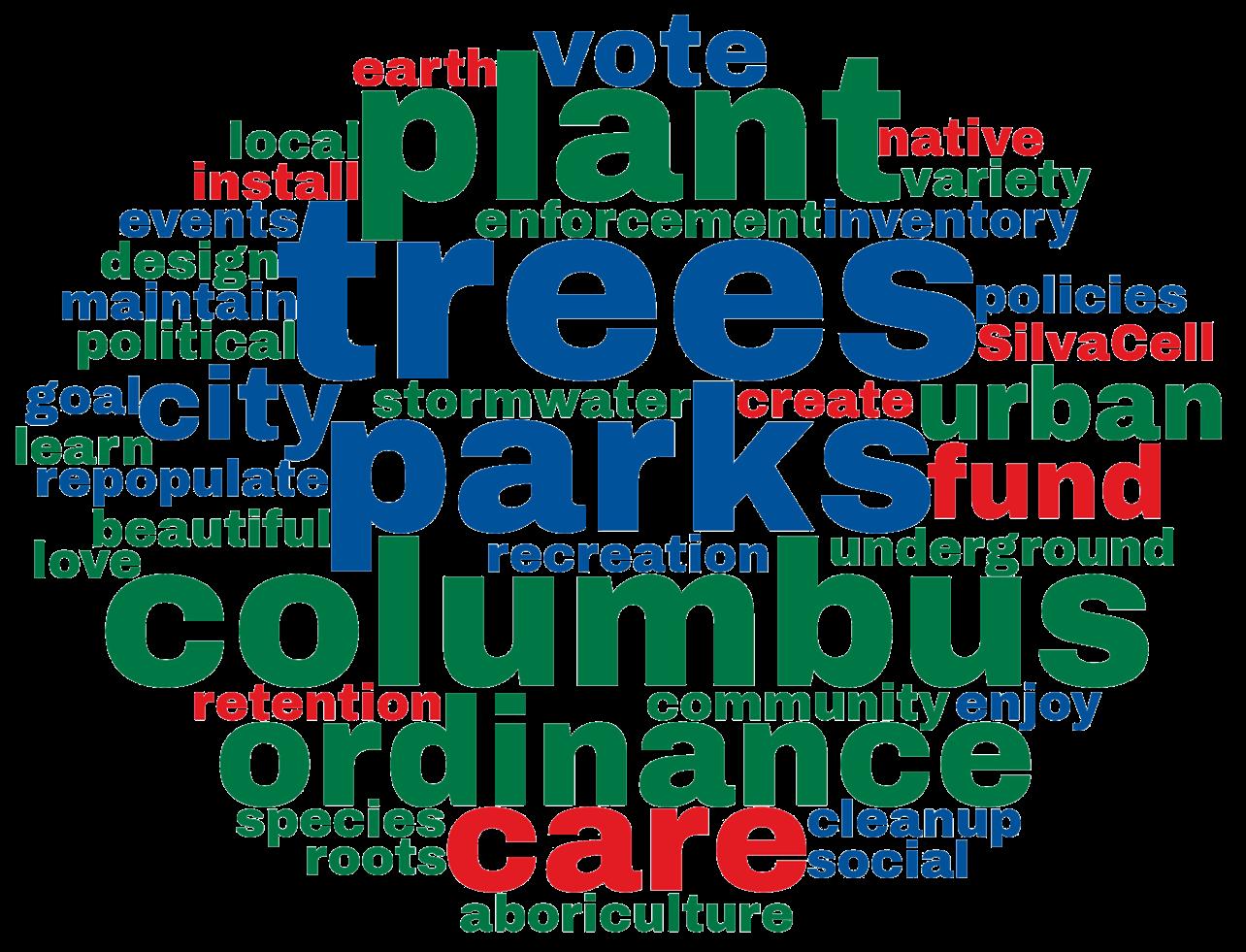
2 minute read
Avenues of UFMP Input
Figure 3.1 | "Let's Talk Trees" Public Open House
Over 135 residents viewed a presentation on Columbus' urban forest and provided feedback. ▲

Figure 3.2 | Word Cloud of Public Open House Participants
One of several activities included a general request for priorities that should be the focus of the plan. This word cloud demonstrates several key items including funding, policy initiatives and ideas for implementation. ▲ The community contributed valuable insights and opinions primarily through five avenues of input:
#1 Public Open House
“Let’s Talk Trees” Public Open House (March 4, 2020, 6-8 p.m. at Wyandot Lodge).
This outreach effort was a public open house with the goal of providing an educational and interactive way for the community to provide input on the challenges and solutions to increasing Columbus’ tree canopy. More than 135 residents visited seven stations to provide input; these were staffed by City representatives and UFMP Project Team members. Additionally, a presentation detailed what tree canopy is and why it is important, the goals of the project and what we found so far in Columbus.
#2 Online Input
Web-Based Comment Form (www. ColumbusUFMP.org). More than 300 residents submitted comments through the online comment form between Feb. 1 - April 15, 2020.
#3 Small Group Presentations
UFMP Project Lead, Rosalie Hendon, spoke to a number of small groups throughout the city upon request, including the GreenSpot Advisory Board, Mid-Ohio Regional Planning Commission and Sustainable Columbus’ external advisory board.
#4 One-on-One Interviews
Thirty people were interviewed to understand existing conditions, define challenges, and explore the future of urban tree canopy and management in Columbus. These included group interviews with city departments and elected officials, as well as one-on-one interviews with community and industry representatives.
#5 Stakeholder Groups of Community Leaders Two stakeholder groups were formed to guide the development of this work: a Project Team (steering committee of 30 people) who met regularly to guide the project, and a larger Advisory Group (more than 100 community leaders and city staff) who participated in a series of three workshops. The full member list for both of these groups can be found in the Acknowledgments section of the document.
Emerging Community Themes Through the hundreds of comments and conversations across the city, a number of themes emerged detailing what the community values and wants for the future. These themes are briefly described in the following pages; a more detailed report can be found at www.columbus.gov.

Figure 3.3 | Columbus Urban Forestry Master Plan Website
The Urban Forestry Master Plan website served as the web-based home for the project. ◄
Figure 3.4 | Advisory Workshop #2
The stakeholder meetings were wellattended and included representatives from community groups and urban forestry professionals. ▼










